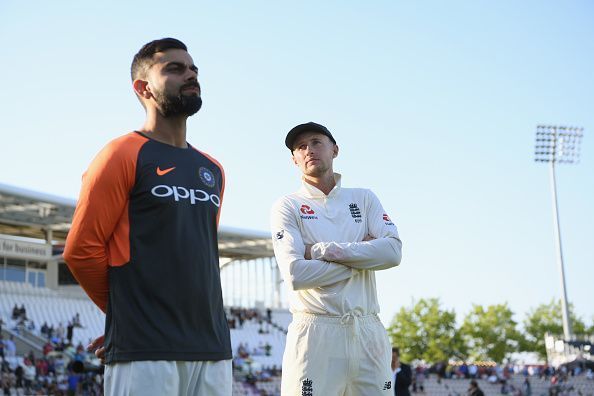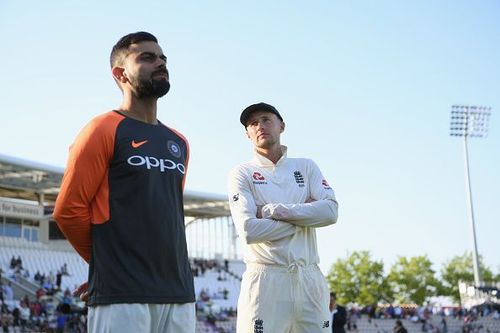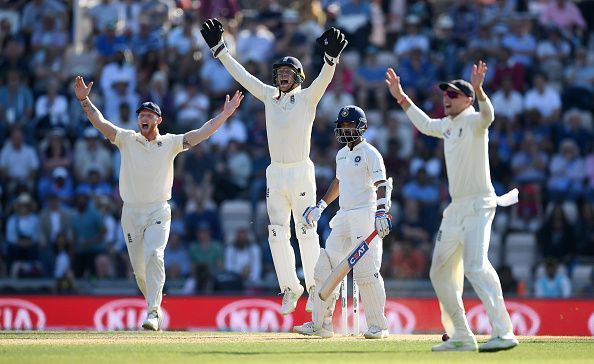
What's my role, captain?
It's a tendency to usually point fingers at the leader for the success or failure of a team during a match and it is something that is very unfortunate. Sighting back to the Greg Chappell times, it was a dim period for Indian cricket as losses and controversies mounted over the shoulder of then captain Rahul Dravid.
What we saw in the forefront was the clash but the real situation was the team effectiveness and interpersonal relationships. The ability to identify, train, define and deliver as a captain and a coach together is what leads to continued positive performances.

The current Indian side with Virat Kohli as the lead has clearly re-defined the concept of building motivation and inspiring to work as a team. What evidently continues to be an underlying metric for team India is the passion to retain its top position across all formats of the game. There is also a huge pool of talent and a lot of players waiting in line to prove their mettle and earn a place in the squad.
As an ardent fan of the Indian cricket team, this is enthralling but at the same time, it also draws a couple of questions. Firstly, "Are the team members focusing on only their individual performance which earns them a concertized spot in the eleven?". Secondly, "Have key players of the squad understood their role very clearly in a team and how is this influencing the outcome of a match?"
Very interestingly in cycling, for the leader to take pole and win the tour, a team works with essential individuals called as "domestiques". A domestique surges ahead and forces a rival team to lead a chase. As soon as the pack catches up, another domestique will surge ahead. The goal is to tire out the opposing teams and soften them up for a run by the team leader. These specialists are informed very clearly about their role in ensuring how they should work as individual contributors so that the leader could finish easily without any form of competitive dominance. Domestiques don't have much chance of winning the race themselves.
Across the India England series, batsmen between Numbers 3 to Number 6 have contributed 113 runs in the first Test, 148 in the second Test (Ajinkya Rahane coming early in the second innings pushing Virat Kohli to bat at a position later in the order), 220 runs in the third and a paltry 110 in the fourth, which sealed the series win for England. This was the biggest loss for the team as the role of the middle order seemed to be sporadic which complimented in surmounting the pressure upon the openers.
On the other hand 213, 294, 240 and 307 are England's contribution by numbers three to six in the current series. Statistics for India clearly highlight that when the middle order has contributed, it has aided in converting the lead to a winning target.
Team India's approach of facing bowlers in the nets could be beneficial if they could create a match simulation of either holding ground and be defensive or aim for a strike rate of 45-50 plus to suit the situation of the game, with the leader being a constant liaison for analyses between the coach and the players.
Though England still continue to find their clinically strong batting order post-Cook's retirement call, coach Trevor Bayliss lauds the character of the team and highlights the clarity of the role each player brings to the table on game day.

England undoubtedly has had several factors of the home condition cushioning their win at various locations across the tournament timeline. For example, the positive bowling track at the Lord's which was capitalized by Joe Root when he put India to bat first. One must not ignore the Indian pace attack too enjoy bowling on these tracks to the English batsmen. England has brought their prime game and best foot forward post their meager performance against Pakistan and West Indies into the series.
Inconsistency has been the bitter enemy for this England side especially post their Ashes scourge and New Zealand wipe-out. However, their preparation in terms of individual effort and team effectiveness has brought in a cathartic feeling to the team post the Ageas Bowl duel and a series win against a premier Indian squad.
The current English side is truly not the best squad that the country has seen so far especially with the aging pace attack (though they have bowled some fantastic spells) and an uncertain spin choice, and India was indubitably the predictive winners for this series.
Team India's batsmen and bowlers need to begin adapting to the alien conditions in other continents to essay their roles clearly with sound technicality, experience, and confidence. If not they will only remain the kings of the Asian subcontinent pitches. Very importantly India will be touring Australia at the end of the year to a powerful attack of Josh Hazlewood, Mitchell Starc, Pat Cummins along with Nathan Lyon.
Maybe the analysis of the batting in this series especially from the middle order and the few glitches in the bowling from the spin department would be a thing or two to pick up before touring Down Under so that the Kohli-led side would hold onto their rank before it gets too late.